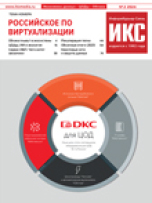| Рубрикатор |  |
 |
| Все новости |  |
World News |  |
 |
Analysis: Big spenders reinforce boom-bust cycle
| 03 июня 2010 |
News of large capital expenditure increases for chip manufacturing are now coming thick and fast. But with chip manufacturing utilization bumping along in excess of 90 percent — effectively sold out — this sudden surge in spending intention is not going to make an impact any time soon.
When it does have an impact it will almost certainly produce an oversupply bust sometime in 2012 or 2013 as consolidation amongsts pure-play IDMs exacerbates the boom-bust cycle.
Analysts and statisticians are looking at an annual global chip market that could jump in 2010, albeit off the back of a very bad 2009, by more than 30 percent. That growth now appears to be locked-in barring any major macro-economic shocks to the system such as a 9/11-type act of terrorism or the collapse of a major currency.
But it has to be born in mind that the sales collapse of 2009 was itself caused by a macro-economic event, but the internally-generated boom-bust cycle of the semiconductor industry continues. And the down side to a 30 percent boom in 2010 is likely to be a bust, possibly of a similar magnitude somewhere down the line.
With the announcement of GlobalFoundries' plans to invest an additional $3 billion in manufacturing capacity expansion we now have the set of Intel, Samsung, TSMC, GlobalFoundries and Toshiba. These companies are serious about chip manufacturing at the leading edge and in high volume and apparently able to afford the multibillions of dollars per year needed to remain in the race.
However, as increasing numbers of what we must now call second-tier IDMs have trimmed spending and adopted a fab-lite strategy, and as the leaders have moved cautiously up to this point, the industry has effectively been on a capital expenditure diet for several years. As a result the semiconductor manufacturing equipment companies have been starved of revenue and the present race to add capacity is reinforcing the traditional boom-bust cycle of the semiconductor industry.
The fundamental reason for this cycle is fairly obvious. It is that the time associated with component supply-chain visibility — a few weeks to a few months — is much shorter than the time-scale associated with building manufacturing capacity, which is of the order of a year or more, when fab shells have to be constructed. But these long time-scale levers are the only ones the true IDMs have to pull on, which makes for a highly reactive system that tends to race towards oversupply and then in lock step cuts back on spending while trying to fill fab lines.
Cycle becoming more pronounced
And now it looks like the cycle of troughs and peaks is becoming more pronounced.
As Malcolm Penn founder and principal analysts with Future Horizons Ltd. (Sevenoaks, England) has reminded us it takes a good year to get from equipment ordered to commercial output. This means that significant manufacturing capacity additions are not set to be seen until late 2011 or early 2012.
The alignment of low capex by the semiconductor industry over the past few years is partly responsible for the boom we see today and the fab building spree that chip companies are embarking upon.
The fact is that however large the sums that the major manufacturers want to spend it is going to be difficult for them to spend it this year with a chipmaking equipment companies that have suffered over several years. So these tier-one companies may have to lay down their money this year for equipment to be delivered in 2011 or 2012.
It is also strange how all these chip makers remain unassailably confident that they are on the best of terms with the chipmaking equipment industry and will certainly get the billions of dollars of extra equipment they have decided they want right on time.
If you are a Samsung or a TSMC, then maybe size of your bankroll can persuade suppliers to pull out all the stops, but that does not mean the chip making equipment industry as a whole can respond to the semiconductor industry en masse without delay. Somewhere and for somebody delivery times are going grow and prices are going to rise.
This exacerbated boom-bust cycle is also going to produce "fall out" for the second tier IDMs and the fabless chip industry. In these boom times the second tier IDMs find their own fabs, the few left after they cut in the previous trash cycle, are fully loaded and are inclined to push as much manufacturing out to foundries as possible, which is likely to displace fabless chip companies that rely on foundry manufacture.
Again the larger companies, such as STMicroelectronics in the IDM sphere or Broadcom or Qualcomm in the fabless sector, will use their size and longevity to persuade foundries to support them. But something will have to give and the smaller companies may find themselves unable to access all the capacity they could use and the boom years less beneficial than they might expect.
Источник: EETimes.com

















Оставить свой комментарий:
Комментарии по материалу
Данный материал еще не комментировался.